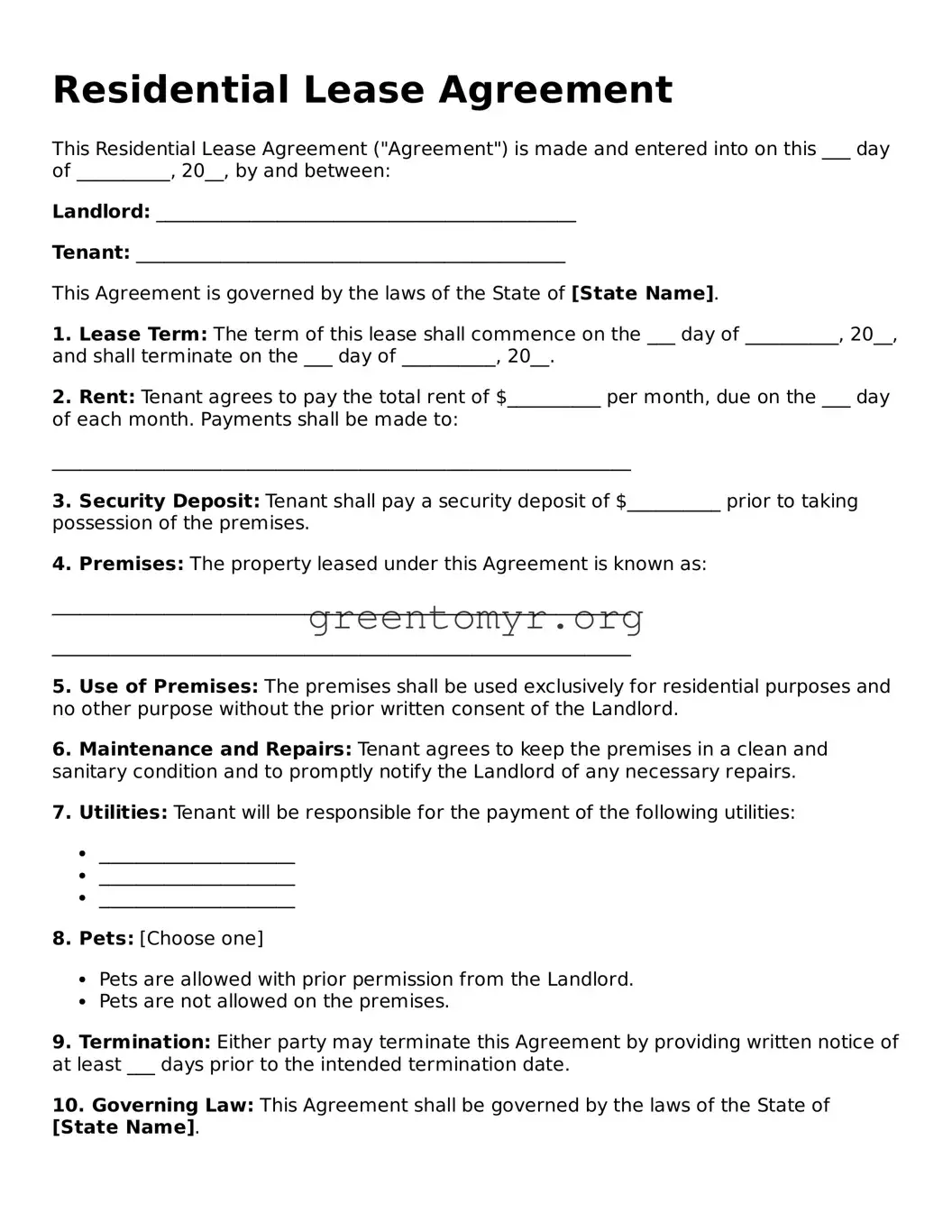Residential Lease Agreement
This Residential Lease Agreement ("Agreement") is made and entered into on this ___ day of __________, 20__, by and between:
Landlord: _____________________________________________
Tenant: ______________________________________________
This Agreement is governed by the laws of the State of [State Name].
1. Lease Term: The term of this lease shall commence on the ___ day of __________, 20__, and shall terminate on the ___ day of __________, 20__.
2. Rent: Tenant agrees to pay the total rent of $__________ per month, due on the ___ day of each month. Payments shall be made to:
______________________________________________________________
3. Security Deposit: Tenant shall pay a security deposit of $__________ prior to taking possession of the premises.
4. Premises: The property leased under this Agreement is known as:
______________________________________________________________
______________________________________________________________
5. Use of Premises: The premises shall be used exclusively for residential purposes and no other purpose without the prior written consent of the Landlord.
6. Maintenance and Repairs: Tenant agrees to keep the premises in a clean and sanitary condition and to promptly notify the Landlord of any necessary repairs.
7. Utilities: Tenant will be responsible for the payment of the following utilities:
- _____________________
- _____________________
- _____________________
8. Pets: [Choose one]
- Pets are allowed with prior permission from the Landlord.
- Pets are not allowed on the premises.
9. Termination: Either party may terminate this Agreement by providing written notice of at least ___ days prior to the intended termination date.
10. Governing Law: This Agreement shall be governed by the laws of the State of [State Name].
IN WITNESS WHEREOF, the parties have executed this Agreement as of the date first above written.
Landlord Signature: ________________________ Date: ___________
Tenant Signature: _________________________ Date: ___________
